Straddling the landscape of California, the Sierra Nevada California is an awe-inspiring mountain range that captures the heart with its majestic peaks, sweeping valleys, and a mosaic of biodiversity. From the scenic trails of Yosemite to the serene beauty of Lake Tahoe, this region offers a chance for you to disconnect from the hustle and bustle of daily life and reconnect with nature. The Sierra Nevada's ancient geological formations serve as the backbone of California's natural splendor, shaping the state's identity as a haven for outdoor enthusiasts and nature lovers alike.
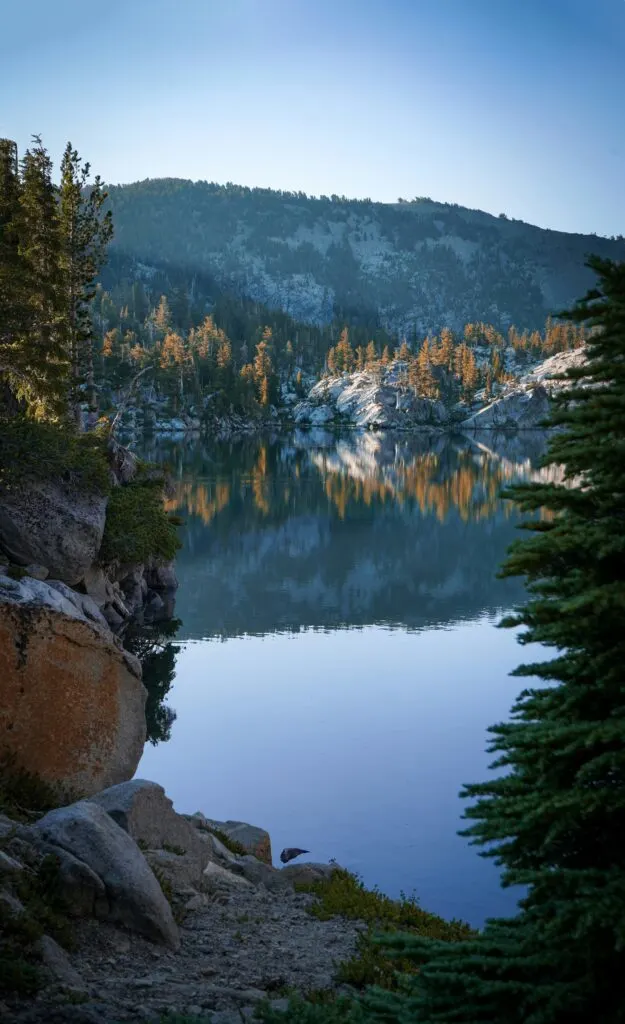
As you explore the Sierra Nevada, you'll encounter a variety of natural wonders—including the iconic giant sequoias, which are among the most massive trees on Earth. Your adventure might lead you to Sequoia and Kings Canyon National Parks, where the sheer scale of these ancient behemoths can truly be appreciated. The mountain range also plays a significant role in California's climate and water resources, with its snowpack acting as a crucial water supply for the state during the dry summer months.
Whether you're an avid hiker, a skier seeking thrills on powdery slopes, or a photographer aiming to capture the perfect sunset over an alpine lake, the Sierra Nevada California welcomes you with open arms. The region's rich history is intertwined with the story of the American West, and its diverse habitats are crucial for the survival of countless species. So, pull on your hiking boots or grab your camera, because the Sierra Nevada's enchanting landscapes are calling your name.
Sierra Nevada California: Your Gateway to Mountain Adventure
Physical Geography
As you explore the Sierra Nevada California, you're witnessing a vast mountain range rich in geological diversity and home to a unique climate that shapes its ecology.
Geology and Formation
The Sierra Nevada mountain range, primarily composed of granite, is a result of a complex geological history marked by significant processes of uplift and erosion over millions of years. These forces have sculpted a series of rugged peaks that include some of the highest elevations in the contiguous United States. The range's granite crest rises as a backbone along its length, a part of the American Cordillera. It sits to the west of the Basin and Range Province and is markedly distinct from the Cascade Range to the north.
Sierra Nevada Climate
Your experience of the climate within the Sierra Nevada will vary remarkably depending on your elevation and which side of the crest you're on. The westward-facing slopes receive an abundance of moisture from the Pacific. This precipitation feeds the extensive Central Valley Watershed. On the east, the rain shadow effect created by the high crest leads to the drier, arid conditions characteristic of the Great Basin. Temperatures can fluctuate significantly, and while the lower slopes and valleys may enjoy mild conditions, the high elevations often display harsher, colder weather.
Major Peaks and Ranges
Your adventure through the Sierra Nevada California will lead you to some of the most breathtaking peaks and intricate mountain ranges in the United States. As you explore, you'll encounter towering summits that reach for the skies and lush, diverse ranges that narrate the geological story of this region.
Notable Summits
- Mount Whitney: At an elevation of 14,505 feet, Mount Whitney is not only the highest point in the Sierra Nevada but also the tallest peak in the contiguous United States.
- Diverse Peaks: The Sierra houses many other significant peaks including Half Dome and the Palisades, which host some of the most challenging climbs and 20 Most Amazing Peaks for avid hikers and mountaineers.
Alpine and subalpine zones provide distinct environments as you journey higher, where the air is crisp, the vegetation is sparse, and the panoramic views are unparalleled.
Subranges and Features
- Subranges: This mountainous region is composed of subranges such as the Palisades and the Evolution Range, each with its own unique topography and ecosystems.
- The Cascades: While predominantly located in the state of California, part of the Sierra Nevada's northern extremity merges with the Cascades, known for volcanic landscapes and diverse habitats.
In the High Peaks areas, you'll often find a blend of rugged beauty and delicate natural systems, with a wide range of flora and fauna nestled within the dramatic slopes and valleys.
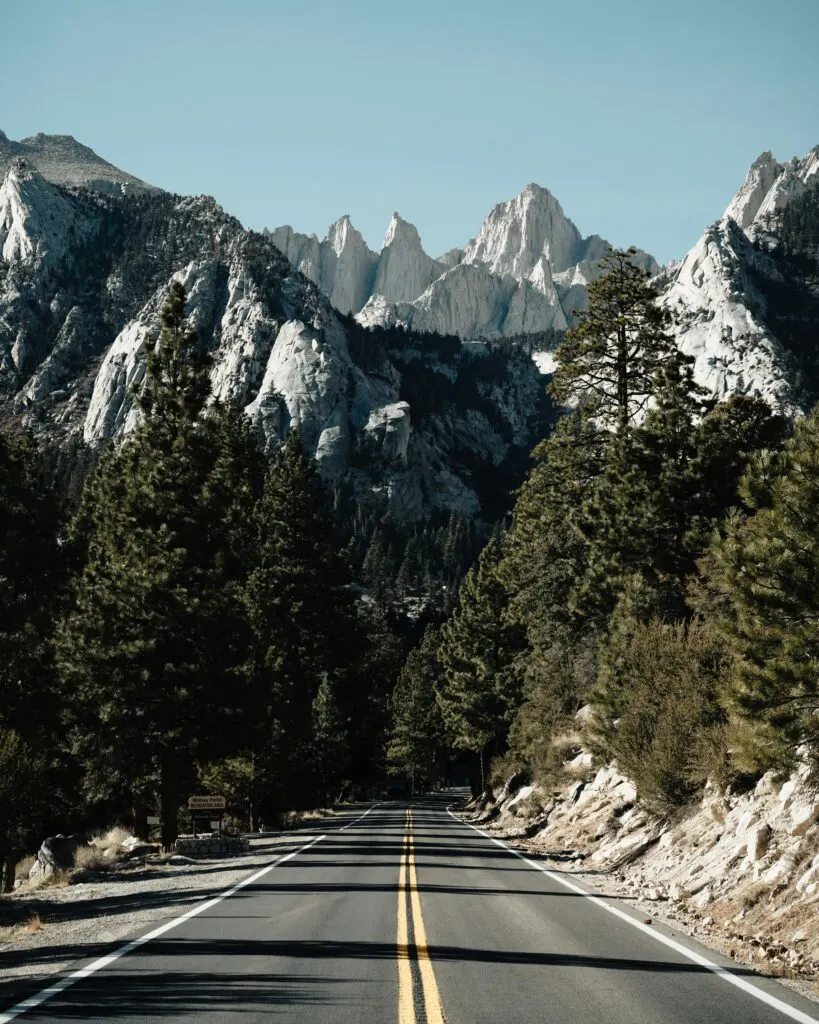
Related Post:
Flora and Fauna
As you explore the Sierra Nevada in California, you'll discover an array of plant and animal life as diverse as the region itself, from towering trees in Yosemite Valley to the alpine wildflowers and myriad wildlife species.
Vegetation Zones
The Sierra Nevada is renowned for its distinct vegetation zones, which change with elevation. At lower elevations, you encounter the foothill zone, where oak woodlands dominate. As you ascend, the environment transitions into the montane forest, home to Sequoias and Giant Sequoias, found in Sequoia and Kings Canyon National Parks. These ancient and monumental trees are among the largest and oldest living organisms on Earth. Yosemite Valley presents a stunning display of these majestic beings, among other vegetation. Further up, the subalpine and alpine zones present a tougher environment where only the hardiest plants, such as the sky pilot, thrive.
Wildlife
The diversity of the Sierra Nevada's landscapes provides habitats for a wide range of wildlife. Commonly sighted animals in the lower elevations include black bears, coyotes, and mule deer. The higher elevations serve as a haven for the American pika and the mountain yellow-legged frog, species well-adapted to harsh conditions. Birdwatchers might spot the mountain bluebird or the Clark's nutcracker. Native fish such as the golden trout can be found in the region's freshwater sources, rounding out the Sierra Nevada's rich tapestry of fauna.

Related Post:
- How to Plan an Epic Yosemite Trip: Tips and Tricks for a Memorable Adventure
- Explore Sequoia and Kings Canyon National Parks: Top Things to Do in the National Parks
Hydrology
In the Sierra Nevada of California, the hydrology aspect is as diverse as it is vital, encompassing mighty lakes and rivers that provide essential water resources for both ecosystems and human use. From the expansive Lake Tahoe to the meandering courses of the Kings and Kern Rivers, water shapes the life of the range.
Lakes and Rivers
The Sierra Nevada is home to the renowned Lake Tahoe, one of the largest lakes in the U.S., with a depth of over 1,600 feet, making it the second deepest in the country. This lake holds enough water to cover the entire state of California with 14 inches of liquid. As for rivers, the Merced, Kern, and San Joaquin Rivers carve their way through valleys, supporting various forms of life and connecting to the vast Pacific Ocean.
- Eastern Sierra rivers, notably the Truckee, Carson, and Walker Rivers, have distinct hydrological patterns and feed into lakes such as Mono Lake and Walker Lake.
- The subalpine zones, with their seasonal ice and snow, feed streams that support unique habitats and contribute to the overall water systems.
Waterfalls
The Sierra Nevada's waterfalls are fed by melting ice and snowpack from higher altitudes. Cascades like those found on the Kings River and in the Kaweah River watershed are impressive, especially during the runoff season. Notable falls in Yosemite, like those along the Merced River, swell in spring and early summer, offering spectacular sights. Here's how some of these connections flow:
- Merced River originates from the high alpine meadows and flows into Yosemite Valley, with its iconic waterfalls.
- Kings River and Kaweah River have dramatic drops creating stunning waterfalls and eventually feed into the historical Tulare Lake bed, though the lake itself no longer exists due to water diversion for agriculture.
- Rivers like Kern and San Joaquin contribute significantly to the agricultural districts as they travel towards the lower plains.
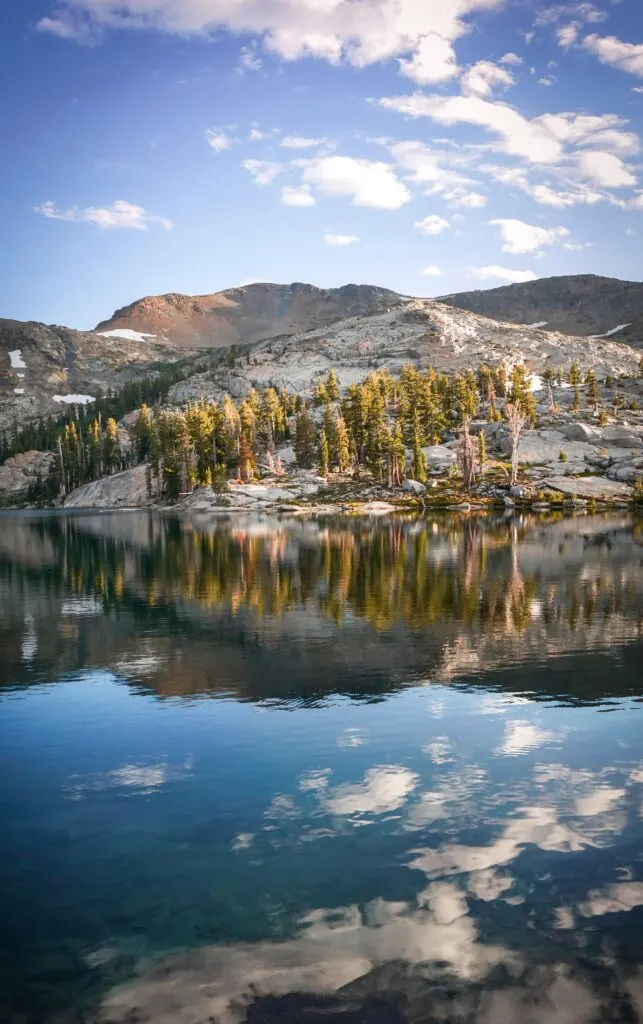
Related Post:
- Best Waterfalls in Northern California: A Guide to the Most Beautiful Natural Wonders
- Truckee California: Your Gateway to Mountain Adventure
- Visit Lake Tahoe: Your Ultimate Guide to Outdoor Adventure
National Parks and Forests
In the Sierra Nevada of California, you'll find a collection of the country's most iconic National Parks and Forests. Here, you can explore vast wilderness areas and national monuments, marvel at towering trees, and experience the majestic beauty of the mountains.
Yosemite National Park
Yosemite National Park invites you to gaze upon its world-famous granite cliffs, waterfalls, and diverse range of wildlife. It's a centerpiece of the region, offering you a mix of adventures from rock climbing to peaceful hikes. Key features of Yosemite include the formidable El Capitan and the serene Yosemite Valley. Visitors can find more information about the park at the Sierra National Forest website.
Sequoia and Kings Canyon National Parks
Adjacent to one another, Sequoia National Park and Kings Canyon National Parks boast some of the largest trees on Earth, the giant sequoias, which stand as natural monuments within these verdant landscapes. Kings Canyon will enthrall you with its deep valleys, while Sequoia National Park offers the chance to walk among giants such as General Sherman, the largest living tree by volume. Discover the parks' combined beauty at Sequoia & Kings Canyon National Parks.
National Forests
The Sierra Nevada region is also known for its extensive National Forests, including the Sierra National Forest and Inyo National Forest. These forests protect a variety of landscapes, from rolling foothills to high mountain peaks. Whether you're into hiking, fishing, or simply soaking in the wilderness views, these forests provide the perfect backdrop. Specifically, the Sierra National Forest features a wealth of outdoor activities set against the stunning Sierra Nevada mountains, detailed further at National Forest Foundation.
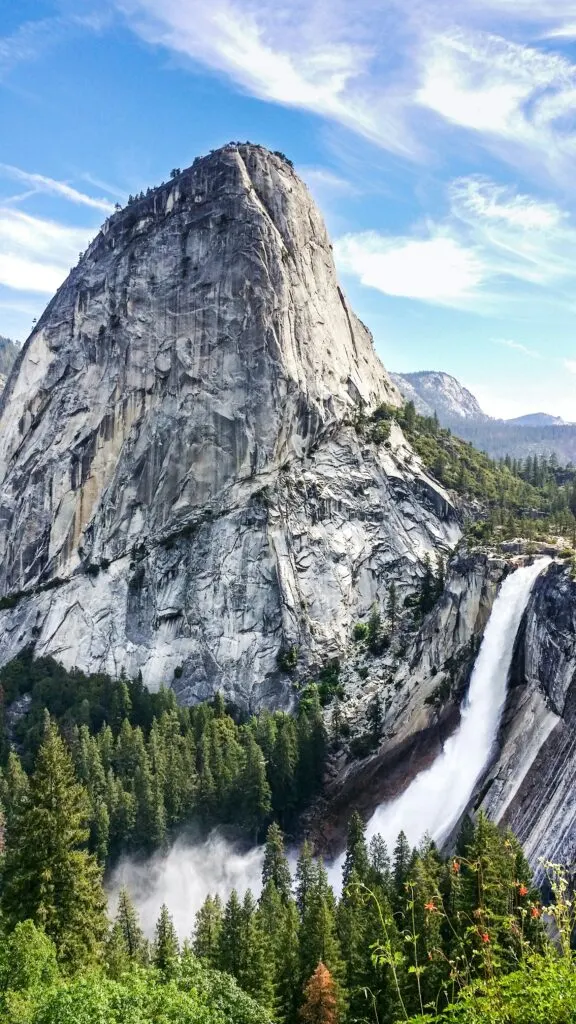
Recreation and Tourism
Sierra Nevada, California, is your playground for a vast array of recreational opportunities and a rich tapestry of cultural experiences. Whether you're looking to indulge in outdoor escapades or immerse yourself in the local heritage, this region promises memorable adventures.
Outdoor Activities
Camping: You can find your perfect spot under the stars at sites ranging from the comforts of RV parks to the tranquility of wilderness areas. The area boasts both family-friendly campgrounds and secluded backcountry sites. Pack your tent and experience the serene beauty at destinations like Mammoth Lakes, known for its scenic landscapes and outdoor amenities.
Hiking: With an extensive network of hiking trails, you're sure to find one that matches your spirit of adventure. Whether you're in for a gentle stroll or a challenging trek, trails in the Sierra Nevada offer breathtaking views and a chance to connect with nature. Lace up your boots and explore the iconic John Muir Trail or take a day hike through the lush Gold Country.
Fishing: The Sierra Nevada's crystal-clear lakes and streams are a haven for anglers. Cast your line in the hope of catching trout or bass, and enjoy a peaceful day on the water. Mammoth Lakes and its surroundings are particularly renowned for exceptional fishing spots.
Activities: Your thirst for adventure can be quenched with a variety of activities. Mountain biking, rock climbing, and water sports are all at your doorstep in the Sierra Nevada.
Cultural Attractions
The Sierra Nevada California region is steeped in history and local culture. Gold Country is a gateway to the past, where you can step into the shoes of the 49ers and pan for gold or explore historic mining towns. The region's calendar is dotted with events celebrating local traditions and craftsmanship. Attend a cultural festival or a local art show to deepen your connection with Sierra Nevada's vibrant community.
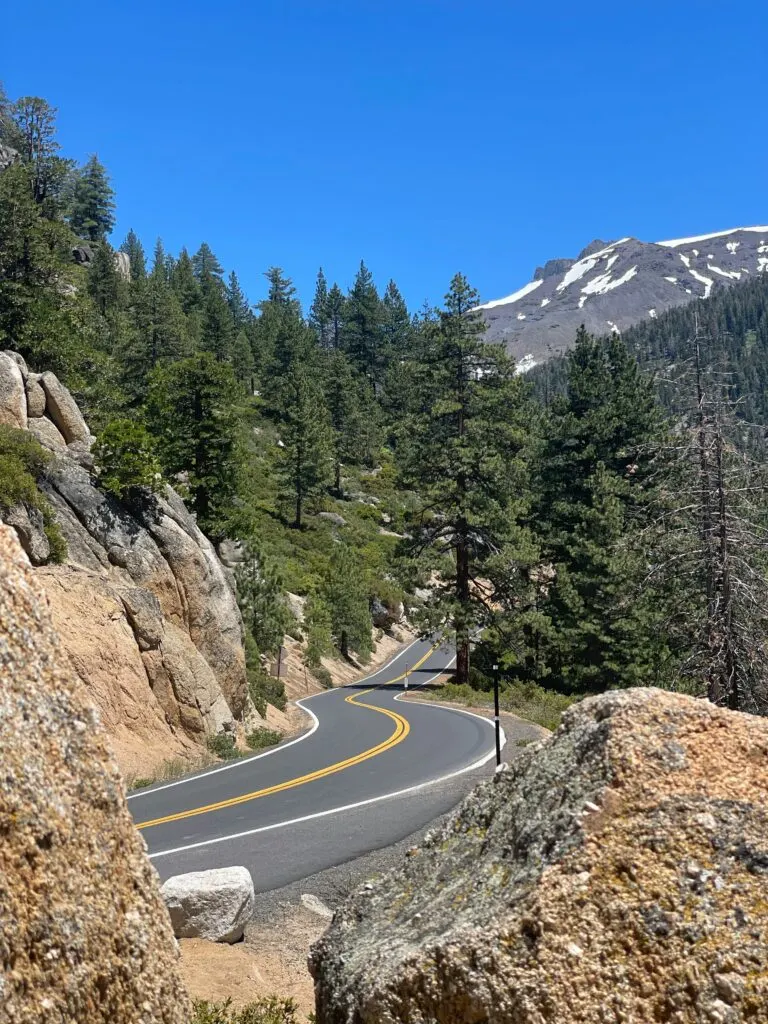
Related Post:
Human Influence
Within the Sierra Nevada California, your actions and those of past communities have significantly shaped the landscape. From the historic exploitation of natural resources to modern conservation initiatives, your collective impact is marked and ongoing.
Historical Land Use
During the California Gold Rush, a wave of American migration drastically altered the Sierra Nevada. Your ancestors engaged in mining and logging, practices that transformed the ecology and geomorphology of the region. Rivers were rerouted and soils were heavily disturbed as they sought precious metals, shaping the environment in ways still visible today. Towns like Sacramento grew rapidly, pushed by the demand for resources and the influx of fortune-seekers.
- Mining Impact: Erosion, sedimentation in waterways
- Logging Consequences: Deforestation, habitat disruption
Conservation Efforts
In response to historical exploitation, you have developed various conservation strategies to restore and protect the Sierra Nevada's ecosystems. Non-profit organizations and governmental entities work together on projects focused on reforestation, wildlife protection, and managing visitor impact.
- Reforestation: Planting native trees to reduce erosion and improve air quality.
- Wildlife Protection: Creating reserves to preserve the natural habitats of species unique to the Sierra Nevada.
- Visitor Management: Establishing guidelines to minimize your environmental footprint while enjoying the natural beauty.
Your role in these efforts is crucial; whether you're a local steward or a visitor, your responsible engagement with the environment ensures the Sierra Nevada California can thrive for generations to come.

Related Posts:
- Family Friendly Gold Mining in California: A Fun and Safe Adventure for All Ages
- California Gold Mine: A Historical and Economic Overview
Infrastructure and Access
When you visit the Sierra Nevada region, the transportation and visitor facilities are crucial for a seamless experience, especially if you're planning to explore landmarks like the General Sherman Tree or the vast American Cordillera. Proper infrastructure ensures that these natural wonders are accessible while preserving the area's integrity.
Transportation Routes
Major Highways: In the Sierra Nevada California State Route 49, often celebrated as the ‘Golden Chain Highway', runs through the Sierra foothills and offers access to various historic sites from the gold-rush era. For a scenic route that takes you closer to the Sierra high country, consider traveling along U.S. Route 395. This highway parallels the eastern Sierra and provides stunning views of the mountain range, including access to Yosemite Valley through Tioga Pass during the warmer months.
Air and Rail Travel: While there aren't large airports directly within the Sierra Nevada, the Reno-Tahoe International Airport is a convenient entry point just to the north. For a unique experience, consider the Amtrak California Zephyr train line, which traverses the American Cordillera, providing spectacular views of the Sierra Nevada topography.
Visitor Facilities
Lodging and Campgrounds: You'll find a range of accommodations within the Sierra Nevada, from rustic campgrounds to cozy mountain lodges. Yosemite National Park, for instance, offers everything from the luxury of The Ahwahnee Hotel to various campgrounds nestled within Yosemite Valley.
Park Amenities: The visitor centers in the Sierra Nevada, such as those in Yosemite Valley, furnish you with maps, educational exhibits, and local insight, which can greatly enhance your exploration. You're likely to find clean, well-maintained facilities that aim to both accommodate visitors and protect the natural environment.
Recreational Access: The Sierra Nevada is a haven for outdoor enthusiasts. With access to the Sacramento and San Joaquin Rivers, you can enjoy water activities like rafting, or simply relax by the water's edge. Moreover, extensive trail systems allow you to hike or bike through diverse landscapes, including the remarkable trails that lead to the General Sherman Tree, the world's largest tree by volume.
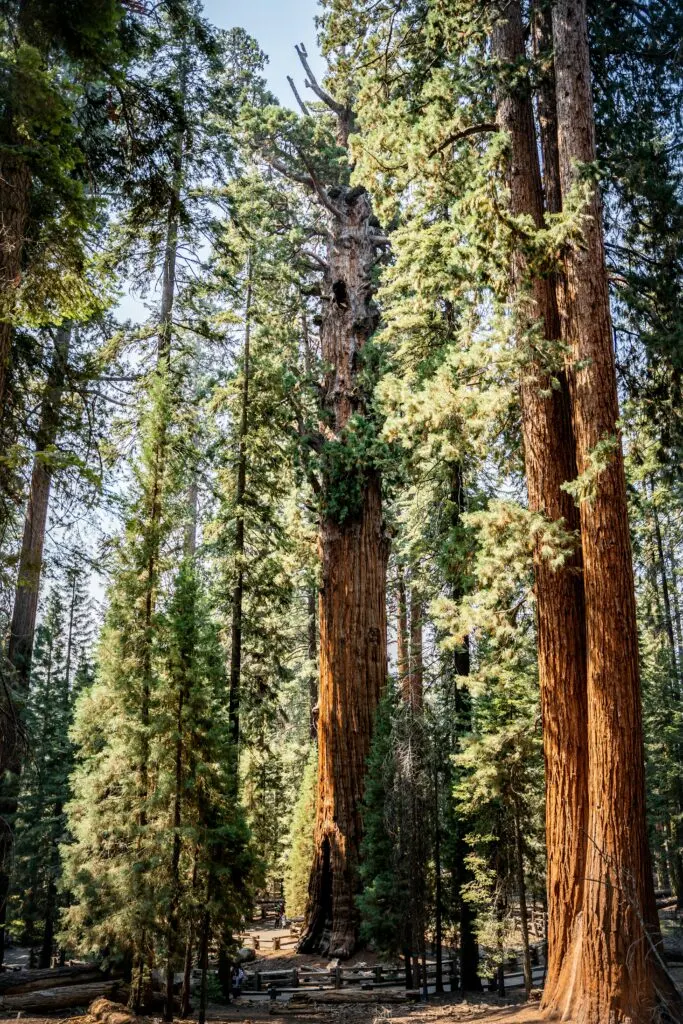
Research and Education
In the heart of California, you can explore the Sierra Nevada Mountains, a magnificent terrain that offers more than just scenic beauty. They're also a center for scientific discovery and learning. Well-established institutions like the Sierra Nevada Research Institute (SNRI) at the University of California, Merced, facilitate cutting-edge research that spans from ecology to hydrology.
- At SNRI, your understanding of the environment will grow as researchers investigate the impacts of climate change, wildfire ecology, and water resources.
- Through community programs and collaborations, they bring educational opportunities not just to scientists, but to you, the public.
The White Mountain Research Center supports and contributes to research in the diverse environments of California, including the Sierra Nevada range. Here, you can find educational programs that encourage you to understand and appreciate the challenges of natural and managed ecosystems. It's a place where research meets real-world application.
If you're keen on community science, you might be interested in the work done by the Sierra Streams Institute. They focus on watershed monitoring, research, and restoration, empowering you to take part in preserving the health of Sierra Nevada watersheds.
Learn about cultural heritage and natural science: Museums in the region provide a space where you can immerse yourself in the rich history and biodiversity of the Sierra Nevada. They serve as educational hubs, often featuring exhibits and programs that showcase local research and environmental efforts.
Whether you're a student, educator, or just someone with a penchant for nature, you'll find a wealth of knowledge and opportunities to engage in research and educational endeavors within the Sierra Nevada.
Climate Change and Environmental Challenges
As you explore the Sierra Nevada California, it's important to recognize the environmental challenges this region faces, particularly from climate change. These shifts not only affect the iconic landscapes but also the wildlife and water resources that are central to the ecosystem.
Ecological Changes
Climate change has had a visible impact on the Sierra Nevada's ecosystem. You may have heard about the shrinking glaciers that form a picturesque part of the high country. Warmer temperatures have caused a reduction in their mass, affecting downstream waterfalls and drainage systems that are critical to both the environment and wildlife.
- The Hetch Hetchy Valley, known for its stunning scenery and reservoir, faces threats from altered precipitation patterns, impacting water supply and hydraulic systems.
- Wildlife populations are adapting to new migration patterns and altered habitats, with some species relocating to higher elevations in search of cooler temperatures.
Resource Management
Effectively managing natural resources has become a key challenge for the Sierra Nevada California in the face of climate change.
- Water Management: The region serves as a vital water source through its network of rivers and reservoirs. As climate change influences snowpack and rainfall, management strategies for this resource are continually adapted.Water SourceChallengesSnowmeltReduced snowpackHetch Hetchy ReservoirEvolving demand & supply balanceLone PineGroundwater depletion concerns
- Forest Health: The Sierra Nevada's dense forests are struggling with increased vulnerability to wildfires and pest infestations, partly due to warmer temperatures and drought conditions. This threatens the ability of these forests to absorb carbon and maintain climate regulation.
Your awareness and understanding of these issues are crucial for the guardianship of the Sierra Nevada's majestic environment.

Unique Aspects and Trivia
Within the breathtaking expanse of the Sierra Nevada in California, you'll discover an array of record-breaking facts and a rich cultural tapestry woven through its history and geography.
Record-breaking Facts
The Sierra Nevada California boasts some of the most remarkable natural wonders in the United States, particularly when it comes to its flora and topography. At its heart, you'll find:
- Giant Sequoias: Emblematic trees of the region, these ancient giants are among the largest trees by volume.
- General Sherman: As the largest known living single-stem tree on Earth, General Sherman is a true colossus, with an impressive bulk.
- Altitude: The highest point in the contiguous United States, Mount Whitney, stands at a towering 14,505 feetwithin these mountains.
The Sierra Escarpment and its deep canyons illustrate the dramatic effects of faulting. The eastern edge of the Sierra Nevada is a notable fault zone, where the earth's crust has dramatically lifted to create the steep escarpment and the range's impressive height.
Cultural Significance
The cultural impact of the Sierra Nevada California is just as profound as its physical features. This region has been:
- A backdrop for history: It has provided the setting for significant events, including the challenges faced by early settlers and the infamous Donner Party tragedy.
- A muse for artistry: Numerous artists and authors have drawn inspiration from the range's majestic beauty and natural wonders, capturing the Sierra Nevada in paintings, photography, and literature.
From the awe-inspiring growth of the Giant Sequoias to the rich cultural narratives that have played out across this landscape, your connection to the Sierra Nevada is both profound and personal.

Related Post:
Frequently Asked Questions
In this section, you'll find answers to common questions about the Sierra Nevada mountains. Whether you're planning a visit or just curious about this majestic region in California, these insights will guide you.
What are some fun activities to do in the Sierra Nevada California mountains?
The Sierra Nevada offers various activities such as guided tours for groups, hiking through scenic trails, skiing during the snow season, and enjoying the spectacular views of its many lakes and vistas. Fishing, camping, and stargazing are also popular activities to engage in.
How can I find a map of the Sierra Nevada region in California?
Maps of the Sierra Nevada California region can be obtained from visitor centers, online tourism websites, and local outposts in California. For detailed and updated maps, the official tourism boards or conservation organizations within the Sierra Nevada provide useful resources.
What is the highest peak in the Sierra Nevada California Mountains?
The highest peak in the Sierra Nevada range is Mount Whitney, which towers at an impressive elevation of 14,505 feet. It's a popular destination for hikers and climbers looking to reach the summit of the contiguous United States' tallest mountain.
Can you provide some interesting facts about the Sierra Nevada Mountains?
Certainly! The Sierra Nevada is home to ancient giant sequoia trees and boasts a deep conservation commitment with 15% designated as conservation land. The range includes three national parks and is known for its significant impact on California's water system through its snowpack.
What's the best way to travel to the Sierra Nevada in California?
Your travel options to the Sierra Nevada California may include driving, which allows for scenic routes along the mountain range, or taking a flight to nearby cities such as Reno or Sacramento, followed by a road trip to the mountains. The region is well-connected through major highways, making it accessible for travelers.
Which is the largest city located in the Sierra Mountains?
Though not located within the mountains, the largest city near the Sierra Nevada range is Reno, Nevada. Located just to the northeast, Reno serves as a convenient gateway for those looking to explore the majestic Sierra Nevadas.
